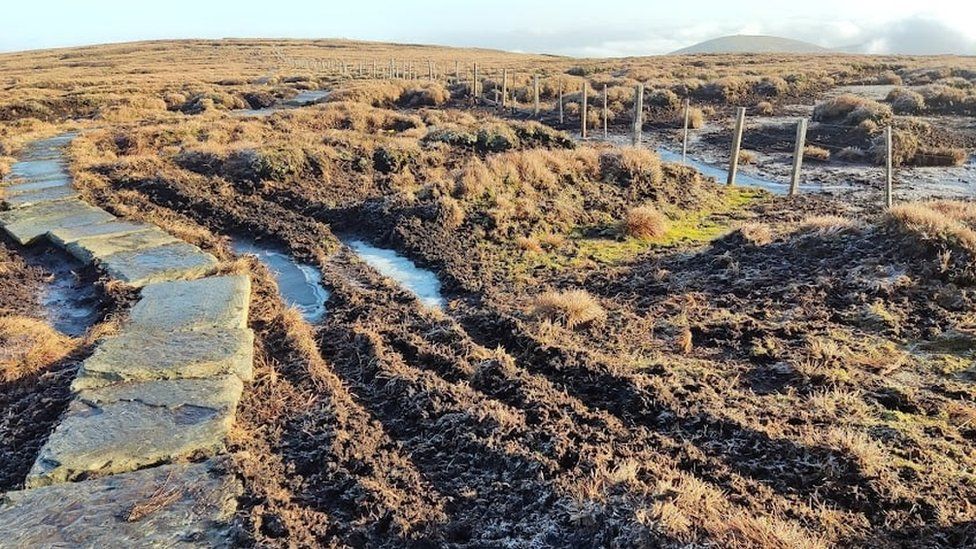Deep tyre marks damage habitat at Cheviot summit
- Published

The park authority says damage comes after two years of restoration work to the peatland habitat
Deep tyre marks have damaged the protected landscape at the top of Northumberland's highest point.
The National Park Authority said it was "incredibly sad" to see what had happened at the summit of the Cheviot.
It believes at least two motorised bikes have churned up recently-planted seedlings and spoiled the landscape.
Volunteers had spent the past two years restoring the damaged and eroded "fragile" peatland.
It is believed the damage has been caused by motorised vehicles, driven to the summit without permission
Robert Mayhew, head of conservation and environment at Northumberland National Park Authority, said: "There is damage up to 65ft (20m) wide in some sections and this means some of the heather brash which was spread on bare peat, and was starting to grow in places, has been destroyed.
"Where the peat is wet, the tyres have cut deep ruts and some of the Pennine Way flagstones have been dislodged, thereby causing a hazard to walkers who venture to the Cheviot summit.
"It is obvious from our site visit that a larger vehicle may have got stuck and this has resulted in significant churning of the peatland habitat," he added.
Public funds were invested into the restoration of the protected landscape
The authority says the damage has set back the conservation work carried out by volunteers over the past two years, with every 3ft (1m) in depth of peat taking 1,000 years to form.
It hopes to rally a team of volunteers soon to help with the tidy up, once the damage has been assessed.
Mr Mayhew said: "This will involve the cutting of heather brash and flying it to the site with a helicopter where volunteers, contractors and staff will then spread the brash across the damaged areas.
"In addition, sphagnum and cotton grass plug plants will need to be planted to encourage the full restoration of the area."
Peat grows incredibly slowly
Follow BBC North East & Cumbria on Twitter, external, Facebook, external and Instagram, external. Send your story ideas to northeastandcumbria@bbc.co.uk, external.
- Published7 February 2016